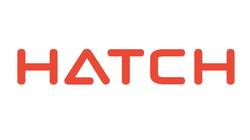Hatch delivers NIRP for Namibia's electricity sector
| Hatch delivers NIRP for Namibia's electricity sector | 18.02 KB | Download | |
| 50-60% of Namibia's power supply has been imported | 1.41 MB | Download | |
| Hatch's first step in preparing the NIRP was to develop a power-system demand forecast for the next 20 years | 1.82 MB | Download | |
| Namibia has one of the best solar insolation rates in the world | 1.32 MB | Download | |
| The Namibian government is enabling the development of solar photovoltaic and concentrated solar power technologies | 281.56 KB | Download |
PRESS RELEASE
Hatch delivers NIRP for Namibia's electricity sector
19 June, 2013: International consulting engineering and project implementation firm Hatch recently completed a National Integrated Resource Plan (NIRP) for Namibia’s electric power system.
Hatch Director of Energy Consulting Robert Griesbach says that the NIRP recommends new generating projects that should proceed in the next ten years and provides perspectives for the following decade. The Electricity Control Board of Namibia and the World Bank were joint clients for this engagement.
Covering approximately 825 000 km2 in south western Africa, Namibia has a population of approximately 2,2 million and a population density of less than three people per square kilometre, which is among the ten lowest in the world. Inherent challenges for the country’s power sector include long distances between population centres, rugged terrain, a long Atlantic coastline and a very dry climate.
Namibia is part of the Southern African Power Pool, along with neighbouring countries that have a combined population of over 100 million. In the last 10 years, 50-60% of Namibia’s power supply has been imported – often from South Africa.
The Government of Namibia’s energy policy, however, calls for domestic power generation to meet 75% of the system’s annual requirement. The government is enabling the development of solar photovoltaic and concentrated solar power technologies, since Namibia has one of the best solar insolation rates in the world.
Hatch’s first step in preparing the NIRP was to develop a power-system demand forecast for the next 20 years. This considered the likely requirements in each sector of the economy, reflecting projected economic and population growth rates. The forecast was adjusted by offsets from energy efficiency gains considered possible from implementation of a demand-side management program.
Hatch then identified the full range of power-generation technologies that could be of interest in Namibia and estimated parameters for each, such as capital cost, operating cost, production capability and grid-connection costs. Using Hatch’s proprietary generation-planning model, Hatch analysed a large number of sequences consisting of combinations of generating plants that could satisfy the projected power-system needs at a specified level of reliability.
After ranking based on the present value of system costs, ten scenarios were ranked on the following additional factors:
- Initial capital investment needs
- Level of reliance on power imports
- Share of generation from renewables
- Level of concentration of plant type or location
- Operating complexity
- Level of use of indigenous energy resources
The recommended NIRP will require a significant increase in investment in new generation and transmission assets to meet the country’s increased power demands resulting from economic growth.
The planned approach will reduce power imports primarily through development of the Kudu power plant operating on Namibia's offshore natural gas reserves, as well as increased use of renewable power by developing solar PV and wind-power plants. The demand-side management program will improve energy efficiency.
Ends.
Notes to the Editor
There are numerous photographs specific to this press release. Please visit http://media.ngage.co.za and click on the Hatch Goba link.
About Hatch Goba
Hatch Goba supplies process and business consulting, information technology, engineering, Procurement and project and construction management and operational services to the mining, metallurgical, energy and infrastructure industries.
Media Contact
Kelly Farthing
NGAGE Public Relations
Phone: (011) 867-7763
Fax: 086 512 3352
Cell: 079 367 7889
Email: Kelly [at] ngage [dot] co [dot] za
Web: www.ngage.co.za
Browse the Ngage Media Zone for more client press releases and photographs at http://media.ngage.co.za

